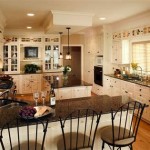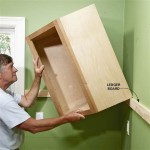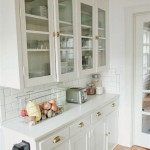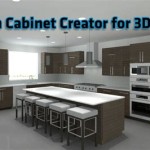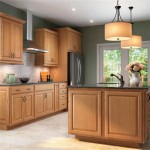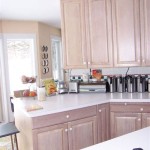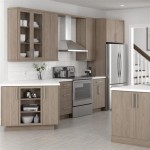DIY Kitchen Cabinet Refacing: A Comprehensive Guide
Kitchen cabinet refacing is an excellent way to update your kitchen without replacing the cabinets entirely. It's a cost-effective and less invasive option that can completely transform the look and feel of your space.
Materials and Tools You'll Need
Before you get started, ensure you have all the necessary materials and tools. These include:
- New cabinet doors and drawer fronts
- Cabinet refacing material (veneer, laminate, or thermofoil)
- Wood filler
- Sandpaper
- Primer
- Paint or stain
- CaulkScrews
- Drill
- Circular saw
- Router
Preparation
Before installing the new refacing material, you need to prepare the existing cabinets. This involves removing the old cabinet doors and drawer fronts, cleaning the surfaces thoroughly, and sanding down any rough edges.
If there are any holes or dents in the cabinet faces, fill them with wood filler and allow it to dry. Once the wood filler is dry, sand it smooth.
Installing the Refacing Material
There are three main types of refacing materials available: veneer, laminate, and thermofoil. Veneer is a thin layer of real wood that is applied to the cabinet faces, while laminate is a durable plastic material. Thermofoil is a vinyl material that is heated and applied to the cabinet faces.
The installation process for each material is slightly different. However, the general steps are as follows:
- Apply adhesive to the back of the refacing material.
- Align the refacing material with the cabinet face and press it into place.
- Use a roller or flat object to smooth out any air bubbles.
- Trim any excess material around the edges.
Finishing Touches
Once the refacing material is installed, you can add the finishing touches. This includes adding new cabinet hardware, caulking around the edges of the refacing material, and painting or staining the new doors and drawer fronts.
Allow the paint or stain to dry completely before using the cabinets.
Tips for Success
- Take your time and measure carefully before cutting any materials.
- Use a sharp drill bit and saw blade to avoid chipping the refacing material.
- Apply even pressure when installing the refacing material to avoid creating air bubbles.
- Allow the adhesive to dry completely before using the cabinets.
With a little planning and effort, you can successfully reface your kitchen cabinets and give your kitchen a fresh new look.

Diy Cabinet Refacing Budget Friendly Made Easy Wisewood

Diy Cabinet Refacing Budget Friendly Made Easy Wisewood

Cabinet Refacing Ideas Diy Projects Craft How To S For Home Decor With

Kitchen Cabinet Refacing The Happy Housewife Home Management

Cabinet Refacing Ideas Diy Projects Craft How To S For Home Decor With

Diy Kitchen Cabinets Makeover How To Install New Cabinet Glass Inserts

How Do I Prepare My Kitchen For A Cabinet Refacing Project

How To Resurface Kitchen Cabinets 2024 Guide Forbes Home

How Cabinet Refacing Can Transform Your Kitchen Tune Up

Cabinet Refacing Advice
Related Posts

